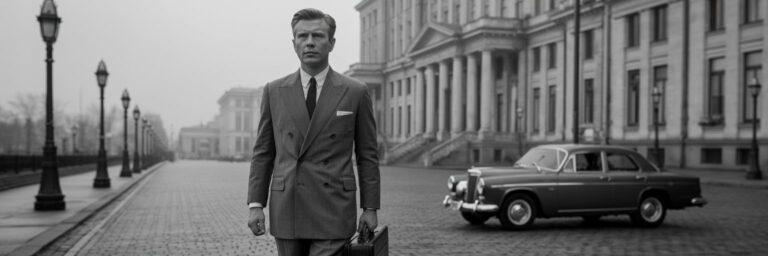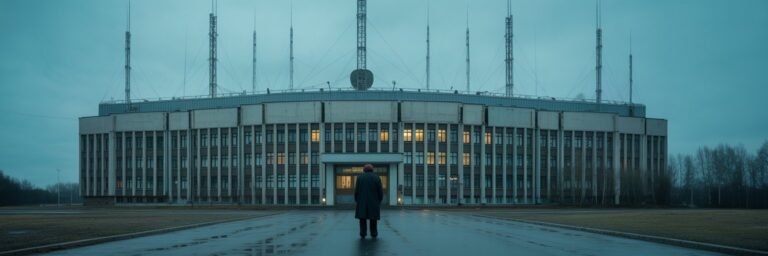INTRODUCTION
The Cold War, a clandestine yet gripping period in world history that unravelled post the Second World War, bore witness to significant political transmutations led by gaunt, yet audacious leaders. These leaders, though polarised in their ideologies, held on to their respective moorings, thus igniting a conflict that lasted for almost half a century. The Cold War was much more than a mere face-off between the capitalist West and the communist East; it was a set corpus of events, strategies, setbacks and triumphs, set adrift on a turbulent sea by the hands of some of the greatest leaders in human history.
HISTORICAL BACKGROUND
The onset of the Cold War, primarily a battle of diplomacy and philosophies, can be traced back to the embers of World War II. As global powers began to reconfigure amidst the annihilation, two nations emerged as superpowers, eventually leading the world into a new era. Under the leadership of President Harry S. Truman and General Secretary Joseph Stalin, the United States and the Soviet Union respectively launched a war, not of bullets and bloodshed, but of ideologies and influence.
In the years that followed, John F. Kennedy, Richard Nixon, Ronald Reagan from the United States; Winston Churchill of the United Kingdom, and Nikita Khrushchev, Leonid Brezhnev, Mikhail Gorbachev from the Soviet Union, all held the reins of their nations and the course of the Cold War. These leaders steered the world through some of its most defining moments such as the Truman Doctrine, the Berlin Wall, Cuban Missile Crisis, Vietnam War and ultimately, the collapse of the Soviet Union.
THEORIES AND INTERPRETATIONS
The orthodox interpretation of the Cold War sees Joseph Stalin’s expansionist policies as the primary catalyst of the conflict. Academic historians such as Arthur Schlesinger and John Lewis Gaddis argue that Stalin’s strategem centred on spreading communism worldwide, eliciting an American response. However, Revisionist historians like William Appleman Williams propose that American economic expansionism sparked the Cold War. Williams asserts that the US’s resolution to salvage its domestic economy by cultivating overseas markets drove the mounting tensions.
Thereon, the likes of Khrushchev and Brezhnev, premising their governance on perpetual conflict, perpetuated the Cold War rhetoric in the Soviet Union. Additionally, they introduced a whiff of communism to numerous proxy nations, attempting to tint the global canvas red. Conversely, Truman, Kennedy, and Reagan, utilised the ripple effect using their respective doctrines to uphold democracy, endorse Roosevelt’s ‘Four Freedoms’ and counter Soviet geopolitical ambitions.
MYSTERIES AND CONTROVERSIES
Several controversies ranging from the ‘Red Scare’ to the ‘Silent War’; from the secret tunnels of Berlin to Kennedy’s contemplation of a pre-emptive strike during the Cuban Missile Crisis, shroud the Cold War in mystery. While the authentic KGB and CIA files have been declassified over time, the true intent, motives, and decisions of these leaders often lie wreathed in as many covers as the covert operations they commanded.
Stalin’s perception of America’s atomic monopoly and the subsequent development of the Soviet atomic bomb ushered an era of dramatic standoffs such as the Cuban Missile Crisis. Yet, why Kennedy decided to pursue a blockade instead of an invasion of Cuba, and why Khrushchev agreed to disassemble the missiles, creating a secret accord unknown to the public, remains a matter of academic debate.
SYMBOLISM AND CULTURAL SIGNIFICANCE
The Cold War period had profound cultural implications and fostered a myriad of symbols. The Berlin Wall and the Iron Curtain reflected the ideological divide between the East and the West, while leaders such as Kennedy and Reagan became potent symbols of resistance. Kennedy’s famous phrase – “Ich bin ein Berliner”, and Reagan’s bold command, “Mr. Gorbachev, tear down this wall,” echoed the amorphous struggle, echoing the voices of freedom beyond the borders.
Stalin and subsequently, Brezhnev, emerged as the personification of the Iron Curtain in the East. Their portrayals in socialist realism art captured the spirit of the Soviet Union’s perceived strength, industrialisation, and commitment to the communist cause.
MODERN INVESTIGATIONS
Recently, new archives and resources have revealed intriguing information about the Cold War protagonists. Through the scrutiny of KGB records, and perusal of released CIA documents, new perspectives have emerged on the strategies and decision-making processes of the leadership. This includes insights into the Soviet fears of Reagan’s Strategic Defense Initiative, the ‘Star Wars’, and Moscow’s role in influencing third-world countries.
Likewise, analyses of Presidential Libraries’ records have helped demystify the backstage of Washington’s politics. These have given us an unfiltered peek into Kennedy’s oratory strategy and Nixon’s covert planning during the détente.
LEGACY AND CONCLUSION
The leaders of the Cold War left behind legacies that continue to influence world politics and international relations. Gorbachev’s Glasnost and Perestroika led to the dissolution of the USSR, causing the end of the Cold War and paving way for modern Russia. On the other side of the continuum, Kennedy’s charisma and Reagan’s firm stand against communism helped shape the dominant narrative of American democracy.
The audacity of these leaders in the face of an unprecedented ideological conflict underscores their enduring influence, even as newer geo-political challenges arise. They remind us that history, and indeed, the world, isn’t simply shaped by events but, in fact, hand-carved by those brave enough to lead through the storm. Their trials, triumphs and tribulations have invariably left behind lessons in leadership that reverberate through the annals of human history, thereby underpinning their stature as the greatest leaders of the Cold War.






